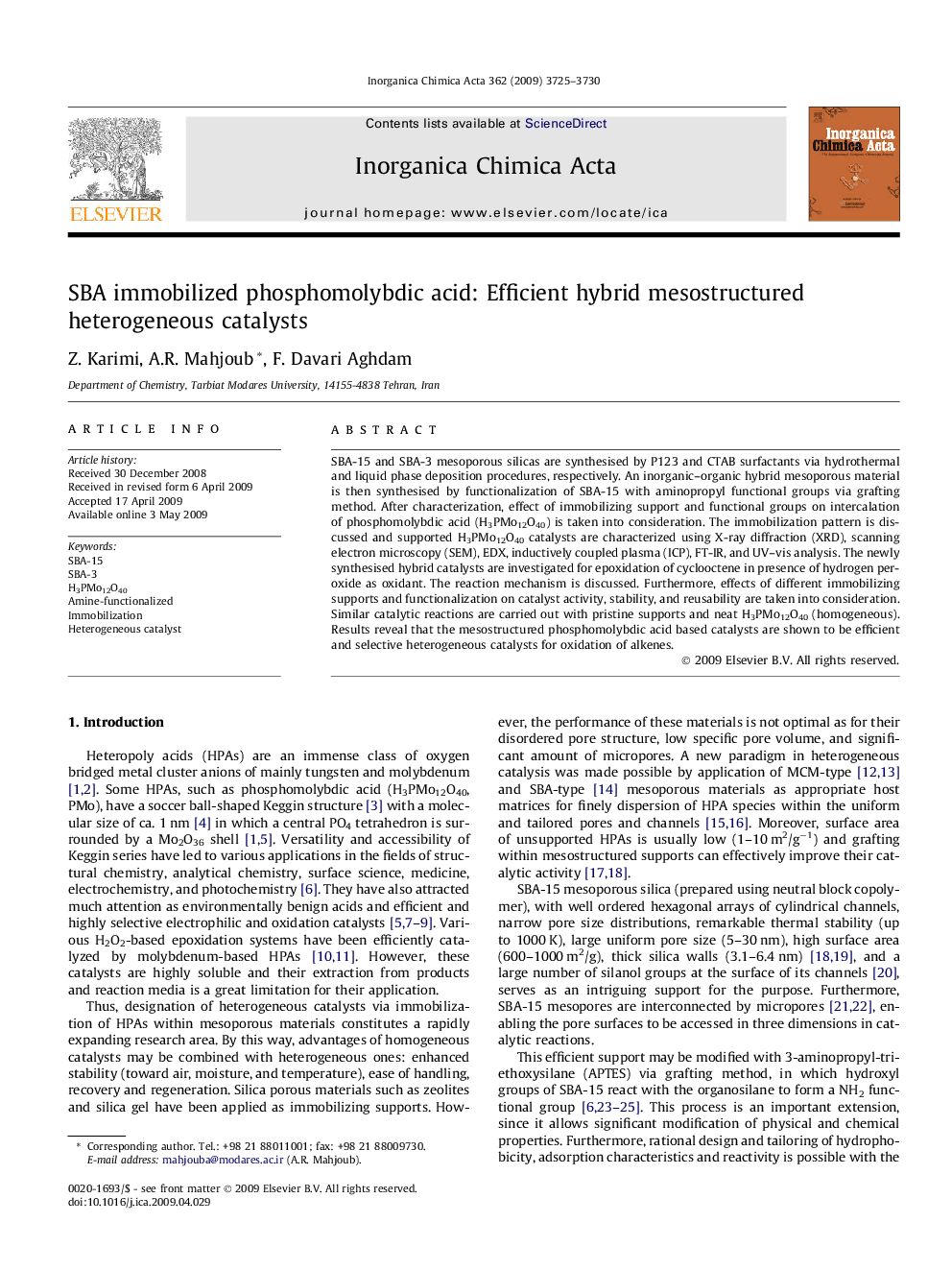| Article ID | Journal | Published Year | Pages | File Type |
|---|---|---|---|---|
| 1309720 | Inorganica Chimica Acta | 2009 | 6 Pages |
SBA-15 and SBA-3 mesoporous silicas are synthesised by P123 and CTAB surfactants via hydrothermal and liquid phase deposition procedures, respectively. An inorganic–organic hybrid mesoporous material is then synthesised by functionalization of SBA-15 with aminopropyl functional groups via grafting method. After characterization, effect of immobilizing support and functional groups on intercalation of phosphomolybdic acid (H3PMo12O40) is taken into consideration. The immobilization pattern is discussed and supported H3PMo12O40 catalysts are characterized using X-ray diffraction (XRD), scanning electron microscopy (SEM), EDX, inductively coupled plasma (ICP), FT-IR, and UV–vis analysis. The newly synthesised hybrid catalysts are investigated for epoxidation of cyclooctene in presence of hydrogen peroxide as oxidant. The reaction mechanism is discussed. Furthermore, effects of different immobilizing supports and functionalization on catalyst activity, stability, and reusability are taken into consideration. Similar catalytic reactions are carried out with pristine supports and neat H3PMo12O40 (homogeneous). Results reveal that the mesostructured phosphomolybdic acid based catalysts are shown to be efficient and selective heterogeneous catalysts for oxidation of alkenes.
Graphical abstractSBA-15 and SBA-3 mesoporous silicas are synthesised, functionalized and applied for designation of highly selective and reusable phosphomolybdic acid based heterogeneous catalytic systems. The newly synthesised hybrid catalysts are investigated for epoxidation of cyclooctene in presence of H2O2. The reaction mechanism is discussed and effects of support texture and functionalization on catalyst activity, stability, and reusability are also taken into consideration.Figure optionsDownload full-size imageDownload as PowerPoint slide
